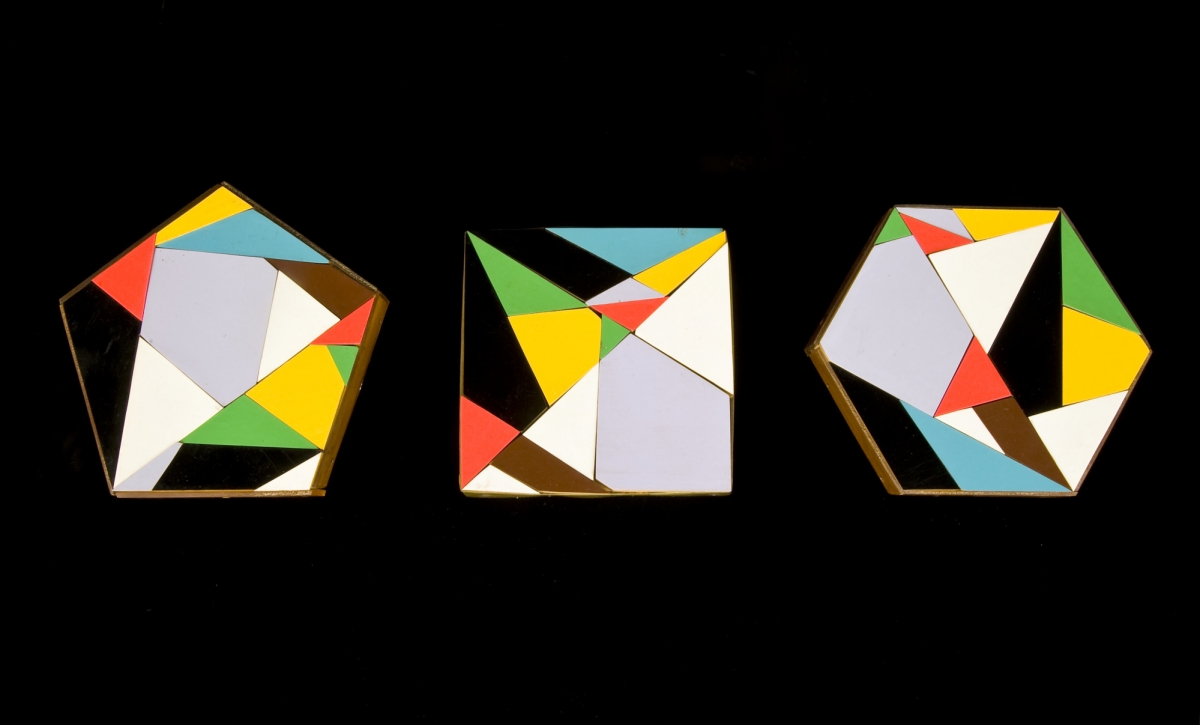- About MAA
- Membership
- MAA Publications
- Periodicals
- Blogs
- MAA Book Series
- MAA Press (an imprint of the AMS)
- MAA Notes
- MAA Reviews
- Mathematical Communication
- Information for Libraries
- Author Resources
- Advertise with MAA
- Meetings
- Competitions
- Programs
- Communities
- MAA Sections
- SIGMAA
- MAA Connect
- Students
- MAA Awards
- Awards Booklets
- Writing Awards
- Teaching Awards
- Service Awards
- Research Awards
- Lecture Awards
- Putnam Competition Individual and Team Winners
- D. E. Shaw Group AMC 8 Awards & Certificates
- Maryam Mirzakhani AMC 10 A Awards & Certificates
- Two Sigma AMC 10 B Awards & Certificates
- Jane Street AMC 12 A Awards & Certificates
- Akamai AMC 12 B Awards & Certificates
- High School Teachers
- News
You are here
Mathematical Treasure: Plane Dissection of a Square Transformable into a Regular Pentagon Transformable into a Regular Hexagon

Three Plane Dissections, each made with the same 15 shapes, 1931, Smithsonian Institution negative number NMAH-JN2012-0951
Any two polygons of equal area can be divided into a finite number of polygonal pieces that can be arranged to form either polygon. This result was well known from the mid-19th century. Mathematical model maker A. Harry Wheeler (1873–1950), a high school teacher in Worcester, Massachusetts, took great delight in developing models of dissected polygons that could be rearranged in interesting ways. Surviving notes from the early 1930s indicate that Wheeler designed models of relatively complicated plane dissections for his own pleasure. Mindful of the popularity of jigsaw puzzles in the Depression years, he also made and encouraged his students to make dissections of simpler forms. Some of these models were hinged at vertices.
The three examples in the photograph show a plane dissection with fifteen pieces that can be arranged to form three different regular polygons. Wheeler’s other plane dissections all had fewer pieces. For an account of these three models, as well as Wheeler’s other plane dissections, see the National Museum of American History web object group at https://www.si.edu/spotlight/geometric-models-plane-dissections.
Peggy Aldrich Kidwell (National Museum of American History, Smithsonian Institution), "Mathematical Treasure: Plane Dissection of a Square Transformable into a Regular Pentagon Transformable into a Regular Hexagon," Convergence (July 2021)




